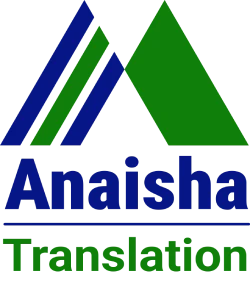Certified Arabic Translation in Ahmedabad – Embassy & MEA Approved
Anaisha Translation provides certified Arabic to English and English to Arabic translation services in Ahmedabad for visa processing, immigration, education, business expansion, legal documentation, medical reports, and technical projects. Our certified Arabic translators are native speakers from UAE, Saudi Arabia, Oman, Qatar, Kuwait, Bahrain, Jordan, and Egypt. All translations follow official embassy formatting and are accepted by MEA, HRD departments, Gulf embassies, international universities, visa centers, and global corporate verification agencies.
Whether you need Arabic translation for studying abroad, Gulf employment visas, Saudi recruitment, Qatar immigration, UAE Golden Visa, business contracts, product documentation, medical travel, or legal submissions, we provide 100% accurate, human-translated, and embassy-compliant documents. Soft copies are sent instantly and hard copies are courier-delivered across Ahmedabad, Gandhinagar, and Gujarat.
Why Choose Our Certified Arabic Translation in Ahmedabad
Native Arabic Linguists (Gulf & Middle East)
Our certified translators specialize in:
- Gulf Arabic (Saudi, UAE, Qatar, Kuwait, Bahrain)
- Modern Standard Arabic (MSA)
- Legal & Embassy Arabic
- Medical & Technical Arabic
- Academic & Commercial Arabic
100% Embassy, HRD & MEA Acceptance
Our certified Arabic translations are accepted by:
- Embassy of UAE
- Embassy of Saudi Arabia
- Embassy of Oman
- Embassy of Qatar
- Embassy of Kuwait
- MEA Apostille Department
- HRD & State Govt Departments
- International universities & Gulf employers
Fastest Certified Arabic Translation in Ahmedabad
- Standard Delivery – 24–48 hours
- Express Delivery – 12–24 hours
- Super Express – 6–12 hours
You receive certified PDFs instantly; sealed hard copies are couriered anywhere in Gujarat.
Document Types We Translate
We translate all Arabic and English documents used for immigration, education, legal processes, technical work, business operations, and medical needs.
| Document Type | Examples | Certification |
|---|---|---|
| Legal | Court Orders, FIR, Agreements, POA, Contracts, Affidavits | Notary + Embassy + MEA |
| Personal | Birth, Marriage, Divorce, Death Certificates, PCC | Notary + Embassy Format |
| Educational | Degrees, Diplomas, Transcripts, Mark Sheets, TC | HRD + MEA + Embassy |
| Medical | Hospital Reports, Prescriptions, Lab Results, Medical Files | Hospital + Embassy |
| Technical | Engineering Docs, Product Manuals, Patents, SOPs | ISO-Certified Translators |
Industries We Serve in Ahmedabad
We support Arabic translation needs across major industries in Ahmedabad and Gujarat:
- Engineering & Manufacturing
- Pharmaceutical & Medical Sector
- Import–Export & Marine Trade
- IT & Software Companies
- Corporate & Legal Firms
- Students applying to universities in UAE, Qatar, Saudi Arabia
Industry-specific terminology ensures accuracy and compliance in every project.
Security & Confidentiality
All documents are processed through encrypted systems under strict NDA-based confidentiality. Sensitive legal, corporate, medical, and immigration-related documents are handled with complete privacy.
Certified Arabic Translation & Legalisation Process
We follow a complete embassy-approved workflow for Arabic translation and attestation:
| Step | Description |
|---|---|
| Step 1 – Translation | Native Arabic linguists manually translate the document. |
| Step 2 – Certification | Includes Notary, Embassy-style formatting, HRD, MEA Apostille. |
| Step 3 – Attestation Workflow | Notary → State Dept → MEA → Embassy (UAE/Saudi/Oman/Qatar) |
| Step 4 – Final Legalisation | Fully valid for Gulf visas, immigration, academics & corporate use. |
Frequently Asked Questions
Are your Arabic translations accepted by Gulf embassies?
Yes, all translations follow embassy-approved formatting with 100% acceptance.
Do you translate both Arabic to English and English to Arabic?
Yes, certified translation is available in both directions.
Do you offer urgent Arabic translation in Ahmedabad?
Yes, we provide urgent delivery within 6–12 hours.
Do you translate Arabic legal, medical & technical documents?
Yes, our team includes expert linguists for every sector.
Do you courier certified hard copies across Ahmedabad?
Yes, courier delivery is available across Ahmedabad, Gandhinagar & Gujarat.
Ahmedabad Areas We Serve – Courier Only
Navrangpura, Bopal, Satellite, SG Highway, Maninagar, Paldi, Gota, Naranpura, Chandkheda, Vastrapur, Ellis Bridge, Ashram Road, Sabarmati, Gandhinagar, and nearby regions.
About Our Arabic Translation Service
Anaisha Translation is India’s leading certified Arabic translation provider with 10+ years of experience. We deliver accurate, legally valid, and embassy-approved translations for immigration, academic purposes, legal matters, business agreements, corporate documentation, and technical projects. Our service ensures confidentiality, precision, and fast delivery across Ahmedabad.
Contact Us
Email: info@anatranslation.com
Phone: 9100392160
WhatsApp: 9100392160 (Instant Quote)

